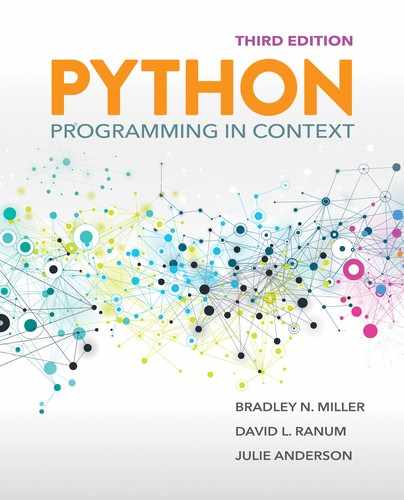10.7 Summary
In this chapter, we explored the implementation of our own data types by creating classes. The programmer can take advantage of this ability to create solutions using a data model that closely resembles the problem domain. Classes provide a description of objects (instances of classes) by defining data and methods. Objects are created by calling the constructor method.
Other methods, both accessors and mutators, allow the programmer to communicate with individual objects. We also introduced a number of special methods defined by Python, which in some cases are bound to operators. Finally, we used the Turtle to implement a graphical simulation of planetary movement.
Key Terms
Python Keywords and Functions
Programming Exercises
-
10.1 Modify the
SolarSystemclass to support more than one sun. -
10.2 Modify the
Planetclass so that the planet does not have the instance variables forxandybut simply uses thexandylocation stored in the turtle. -
10.3 Research n-body simulations. Using the ideas from this chapter, implement your own simple n-body simulation.
Design Credits: Calculator Icon made by Smashicons from www.flaticon.com
